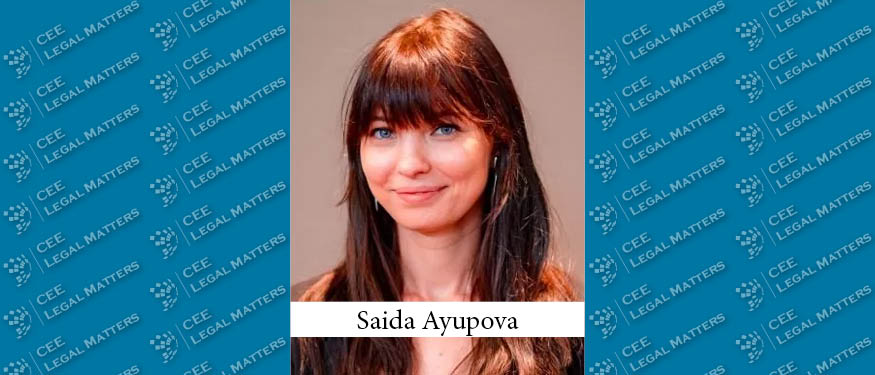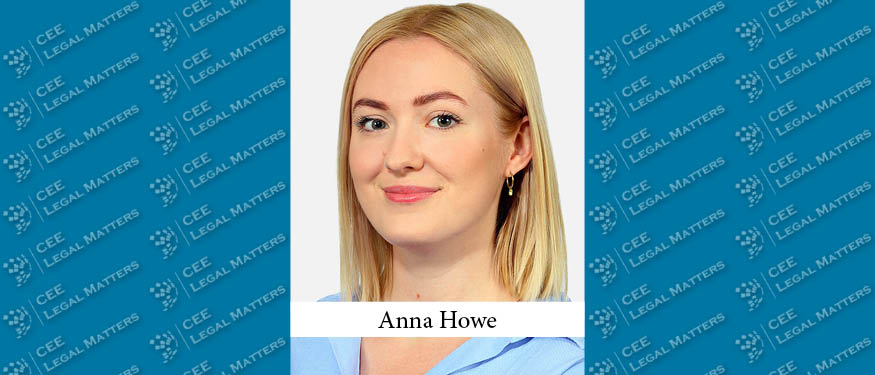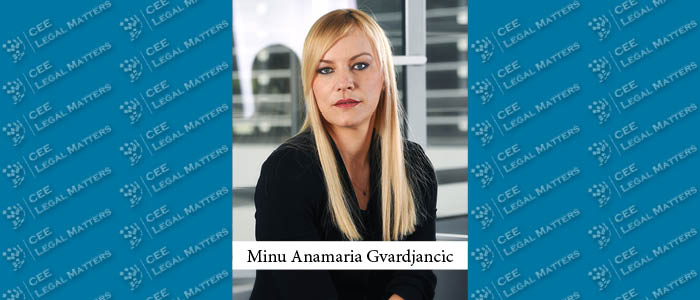When importing goods from third countries into the European Union (EU), you must adhere to EU and national laws regarding importing, declaring, and applying customs duties (such as import duty, value-added tax, and excise duty on certain products).
With the EU sanctions against Russia and Belarus, accurate classification of imported goods has become even more crucial. Misclassifying goods can result in administrative penalties, as outlined in Section 29, Paragraph three of the Customs Law. Moreover, if a product code is incorrectly listed and the item is reclassified as one prohibited for export to Russia and/or Belarus, the individual may face criminal charges under Section 84 of the Criminal Law for breaching sanctions imposed by international organizations and the Republic of Latvia.
In brief
- The persons involved in sales and the State Revenue Service often disagree on the codes that apply to particular goods, and the court of Latvia and the Court of Justice of the European Union see many cases regarding the classification of goods according to the Combined Nomenclature.
- The available information resources do not allow to establish the CN code clear and timely always. Whenever there are questions or doubts about goods classification, it is best to consult with experts.
- Wrong classification of goods can be subject to both administrative and criminal liability.
- To avoid problems, losses and lengthy legal proceedings, merchants have the possibility to contact the State Revenue Service Customs Board and receive the Binding Tariff Information before commencing business relations or importing goods.
- Since the BTI process can take up even few months, it can be too slow for the dynamic world of trade. BTI is issued within 120 days after the receipt of application, but this term can be extended in some cases.
When doing business with Russia and Belarus, special attention must be paid to sectoral sanctions or the economic and financial restrictions that prohibit the import or export of particular goods to or from Russia and Belarus together with the provision of specific services.
One of the problematic issues is correct classification of goods in accordance with the EU Combined Nomenclature.
The Combined Nomenclature is based on the Harmonised Description and Coding System, that was established with the Convention on the Harmonized Commodity Description and Coding System of 14 June 1983 of the World Customs Organisation and together with its Protocol of Amendment of 24 June 1986 was approved with the Council Decision 87/369/EEC of 7 April 1987.
The Harmonised System is a systematic list of commodity descriptions and codes that is used all over the world, mainly for the international trade and statistics. The list was drawn up and is being maintained by the World Customs Organisation.
Goods classification
Goods in the EU are classified according to the Council Regulation (EEC) No. 2658/87 of 23 July 1987 on the tariff and statistical nomenclature and on the Common Customs Tariff and its Annex I, which is amended annually. On 1 January 2024, the Commission Implementing Regulation (EU) 2023/2364 of 26 September 2023 amending Annex I to Council Regulation (EEC) No. 2658/87 on the tariff and statistical nomenclature and on the Common Customs Tariff entered into force.
Goods classification is based on six general rules for the interpretation of the combined nomenclature (Annex I, Part I, Section I (A), to the Combined Nomenclature) laying down the key principles for goods classification. For example, these interpretation rules define that, for legal purposes, classification shall be determined according to the terms of the headings and any relative section or chapter notes. Any reference in a heading to an article shall be taken to include a reference to that article incomplete or unfinished, provided that, as presented, the incomplete or unfinished article has the essential character of the complete or finished article. It shall also be taken to include a reference to that article complete or finished (or falling to be classified as complete or finished by virtue of this rule), presented unassembled or disassembled.
While explanations of the EU Combined Nomenclature (CN) are available publicly¹, the persons involved in sales transactions and the State Revenue Service have often different opinions on the codes that apply to particular goods, resulting in many cases heard by the court of Latvia and the European Court of Justice (ECJ) on the classification of goods according to the Combined Nomenclature.
These include not only those cases where persons have provided wrong classification codes deliberately to reduce the taxes or to avoid sanctions, but also those instances where the parties interpret the classification code differently. Since it is a huge risk factor, these issues must be assessed carefully by all sales parties before and during the transaction.
Case law
The ECJ enshrines several goods classification criteria and principles that helps to better understand the CN structure, use and interpretation:
- in the interests of legal certainty and for ease of verification, the decisive criterion for the classification of goods for customs purposes is in general to be sought in their objective characteristics and properties as defined in the wording of the relevant heading of the CN and of the notes to the sections or chapters (see Paragraph 25 of the ECJ judgement C-810/18of 30 April 2024, Paragraph 33 of the ECJ judgement C-635/21 of 9 February 2023, Paragraphs 36 and 37 of the ECJ judgement C-306/18 of 15 May 2019, and Paragraph 22 of the ECJ judgement C-542/21 of 20 October 2022);
- the meaning and scope of terms for which EU law provides no definition must be determined according to their meaning in everyday language whilst considering the context in which they occur and the purposes of the rules of which they form part (see Paragraph 48 of the ECJ judgement C-182/19 of 26 March 2020, Paragraph 46 of the ECJ judgement C-788/21 of 9 February 2023, and Paragraph 19 of the ECJ judgement C-201/13 of 3 September 2014);
- when the Court is requested to give a preliminary ruling on a matter of tariff classification, its task is to provide the referring court with guidance on the criteria which will enable it to classify the relevant products correctly in the CN, rather than to effect such a classification itself. That classification results from a purely factual assessment which it is not for the Court to make (see Paragraph 31 of the ECJ judgement C-635/21 9 February 2023). However, the Court may provide the national court with all the guidance that it deems necessary (see Paragraph 17 of the ECJ judgement C-198/15 of 26 May 2016);
- although the Explanatory Notes to the HS and CN do not have binding force, they are an important means of ensuring the uniform application of the Common Customs Tariff and, as such, may be regarded as useful aids to its interpretation (see Paragraph 34 of the ECJ judgement C-635/21 of 9 February 2023);
- in interpreting a provision of EU law, it is necessary to consider not only its wording but also the context in which it occurs and the objectives pursued by the rules of which it is part (see Paragraph 34 of the ECJ judgement C-97/19 of 16 July 2020);
- HS Explanatory Notes do not have legally binding force, thus they cannot prevail the CN norms or alter the content of the CN notes (see Paragraphs 28 and 47 of the ECJ judgement C-144/15 of 3 March 2016).
Principles that match the ECJ case law have been embedded also in the Latvian judicial practice:
- a CN heading together with its description is, in fact, a legal rule that defines the criteria that must be met by certain goods to be a subject to that CN heading. In matters regarding the use of CN headings, the dispute is about the correct use of specific CN headings for particular goods (see the judgement of the Department of Administrative Cases of the Senate of the Republic of Latvia in the case No. A420216317, SKA-209/2022 of 26 July 2022);
- the decisive criterion for the classification of goods for tariff purposes is usually their objective characteristics and properties as defined in the relevant CN heading and in the notes to the sections or chapters. It arises from the Paragraph 1 of the General Rules for the Interpretation of the Combined Nomenclature specifying that, for legal purposes, classification shall be determined according to the terms of the headings and any relative section or chapter notes and, provided such headings or notes do not otherwise require, according to the following provisions (see the judgement of the Department of Administrative Cases of the Senate of the Republic of Latvia in the case No. A420139816, SKA-49/2020 of 28 July 2020);
- if the characteristics of the goods objectively indicate that they are intended for a particular purpose, even if incomplete or unfinished, provided that those goods have undergone working which renders them exclusively usable as such and that they thus have the essential characteristics of finished articles, such goods shall be classified according to the CN code of the respective finished goods (see the judgement of the Department of Administrative Cases of the Senate in the case No. A420308715, SKA-7/2022 of 1 July 2022).
Real-life example
An Estonian company manufacturing lighting objects classified poles according to CN code 9405 99 00: Lamps and lighting fittings including searchlights and spotlights and parts thereof, not elsewhere specified or included; illuminated signs, illuminated name-plates and the like, having a permanently fixed light source, and parts thereof not elsewhere specified or included: other parts.
The goods were examined on the Latvian–Russian border, and a ban to export them to Russia was imposed because other CN code had to be used: 7308 90 98 (other structures of iron or steel that are subject to the prohibition to export to Russia in accordance with the Council Regulation (EU) No. 833/2014 (31 July 2014) concerning restrictive measures in view of Russia’s actions destablising the situation in Ukraine).
The State Revenue Service informed the SRS Customs Board Tariff and Payment Department and requested to provide an opinion on the classification of goods for tariff purposes in accordance with the EU Combined Nomenclature. After the SRS Customs Board Tariff and Payment Department provided an opinion that the correct CN code, in the view of the SRS, is 7308 90 98, criminal proceedings was initiated based on Section 84 of the Criminal Law for the violation of sanctions imposed by the United Nations, European Union, and other international organisations or sanctions imposed by the Republic of Latvia. In this case, preliminary investigation is still on-going.
Binding Tariff Information
Fraudulent merchants try to import or export prohibited or sanctioned goods, using various methods. To avoid problems, losses and lengthy legal proceedings, merchants have the possibility to contact the State Revenue Service Customs Board and receive the Binding Tariff Information (BTI) before commencing business relations or importing goods. The goods listed in a BTI can be classified according to internationally-recognised customs classification systems, like CN, TARIC, refund nomenclature, or other customs nomenclature.
It should be noted that a separate BTI application must be submitted for each article by providing a detailed description of that article and substantiating documents, for example, the article layout, specification of the article or product, certificates.
BTI application can only be submitted electronically, using the European Binding Tariff Information (EBTI) system. This system can be accessed using the authentication offered by the State Revenue Service’s Electronic Declaration System (https://eds.vid.gov.lv/login/ > To connect to European information systems > European binding tariff information (EBTI — EU Trader Portal) > Applications > New application).
The goal of BTI is to legally protect a person — if this person has provided true and complete information on goods and has declared these goods in accordance with BTI, the government agencies must take into account the issued BTI and no adverse consequences may arise for the person. However, the term for issuing BTI not always comply with the dynamic trading environment and can even take up several months: within 30 days from submitting the application, the customs agency checks if all the pre-requisites for accepting the application have been met and only then is the applicant informed on acceptance of the application. While BTI must be issued within 120 days after the acceptance of application, this term can be extended in some cases (for example, if analysis that take longer must be performed for the decision to be made).
BTI is issued for a particular article and is binding upon the applicant and customs agencies in the whole EU. BTI is valid for three years. It must be noted that BTI cannot be applied to similar goods that might be classified under another code due to their characteristics, and that a BTI issued to one person may not be used by other persons even when the goods are identical.
Persons involved in trading should assess the necessity for requesting BTI in each individual case by balancing it against the possible risks, business interests and term of receiving the BTI; and it should also be taken into account that not always the process of receiving BTI is efficient and suitable for business speed.
Where to check restrictions and prohibitions on goods movement
Information on the current sanctions, prohibitions and restrictions is publicly available, but it can be difficult to understand what kind of sanctions, prohibitions and restrictions apply to each separate case.
Therefore, the persons involved in external trade can use various tools to establish information on the restrictions and prohibitions on movement of certain goods or on the sanctions imposed on particular goods:
- The SRS Integrated Tariff Management System (ITMS) provides information on the goods codes, tariff measures (like, customs duties) and non-tariff measures (like, restrictions, prohibitions), the codes necessary for filling in customs declarations for various import, export, transit procedures, as well as bans, sanctions and restrictions. This is a very convenient tool because by entering a goods code all the information related to that particular goods is displayed.
- The informative answers provided by the European Commission on various questions about sanctions imposed in relation to Russia and Belarus’ military aggression against Ukraine are available in a separate section on the European Commission’s website (in English only). Not all goods or groups of goods are covered by the informative answers, but additional information can be looked up here when any questions about using CN arise.
- Information on the current international and national sanctions is available on the website of the Ministry of Foreign Affairs of the Republic of Latvia: https://www.mfa.gov.lv/lv/sankcijas
Consult experts in case of questions or doubts
Classification of goods for trading purposes can be complicated and time-consuming and can require specific knowledge and experience. Wrong classification of goods can be subject to both administrative and criminal liability. Although rich information on the use of CN is available publicly (laws and regulations, case law, explanations, etc.) and it is possible to receive BTI, that provides legal protection to the person in question, the available information resources do not allow to establish the CN code clear and timely in all cases. Whenever there are questions or doubts about goods classification according to CN, it is best to consult with experts who can help to understand and use the CN correctly.
By Madara Jozena Fabrina, Senior Lawyer, and Anete Boze, Associate, WIDEN Law Firm














